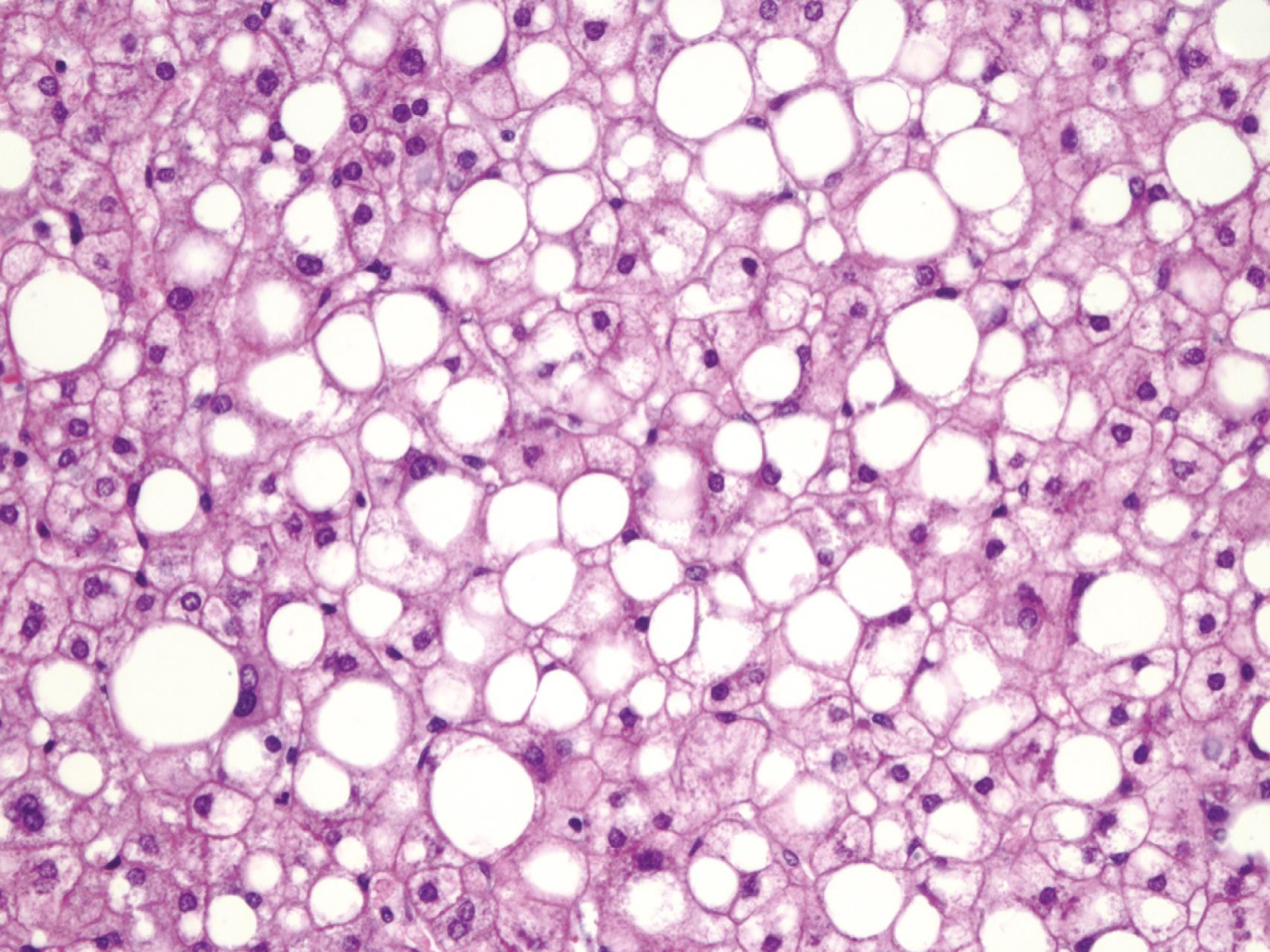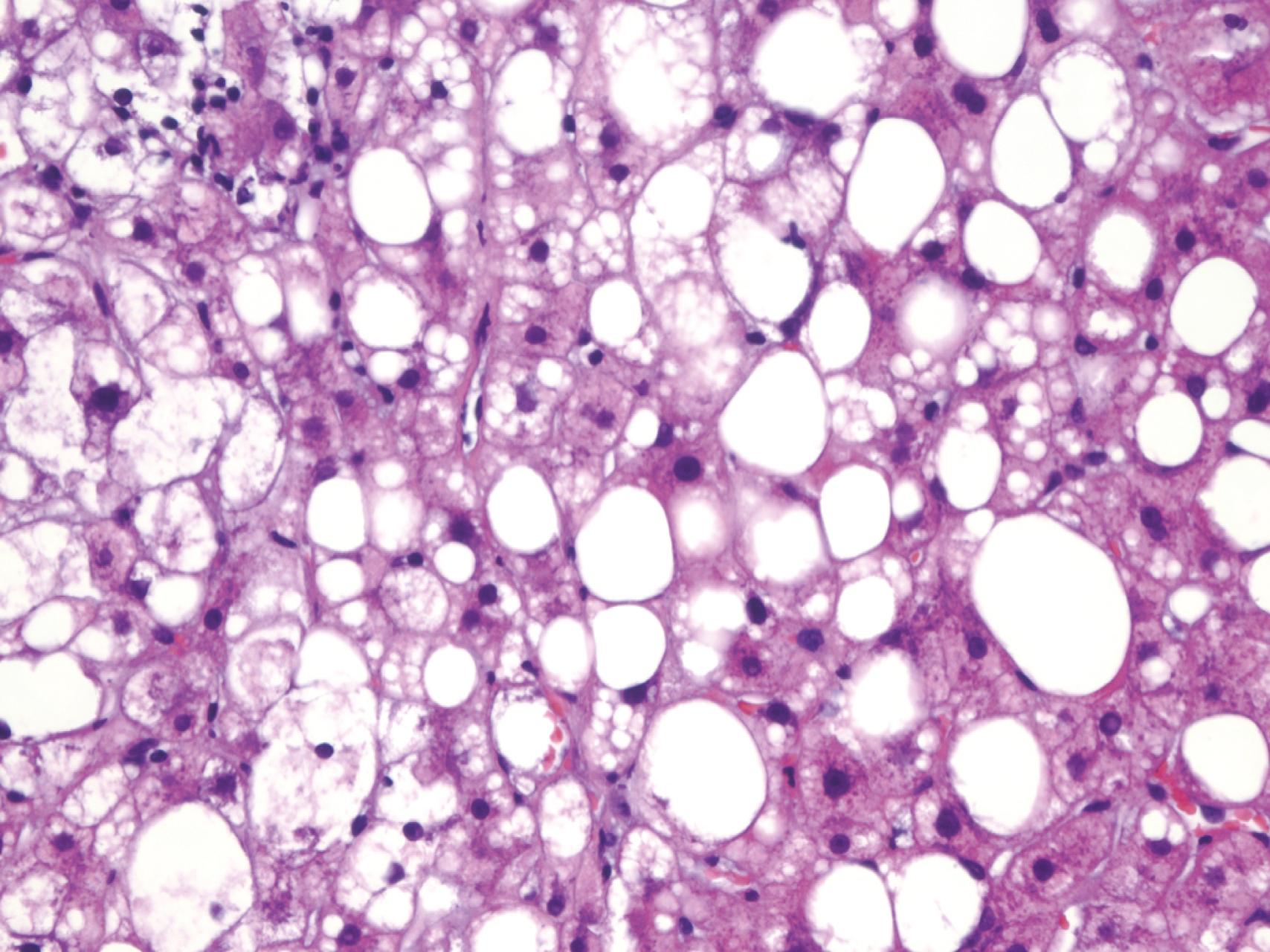Physical Address
304 North Cardinal St.
Dorchester Center, MA 02124
The global obesity epidemic has dramatically increased the prevalence of NAFLD and made it the leading cause of chronic liver disease in Western nations. NAFLD is considered the hepatic manifestation of the metabolic syndrome and shares a strong association with type 2 diabetes mellitus, obstructive sleep apnea (OSA), and cardiovascular disease. Although cardiovascular disease is the leading cause of death in patients with NAFLD, the subset of patients who meet histopathologic criteria for NASH are those at greatest risk of liver-related morbidity and mortality. Ludwig and colleagues coined the term NASH in 1980 to describe a cohort of middle-aged patients with elevated serum liver enzyme levels who had evidence of alcohol-associated hepatitis on biopsy specimens in the absence of alcohol consumption. Subsequent study led to the proposed “2-hit” hypothesis in which a sequential progression from isolated fatty liver (IFL) to NASH involved the initial “hit” of hepatic steatosis followed by a second “hit” of oxidative stress resulting in liver injury. It was subsequently recognized that patients who have steatohepatitis on a liver biopsy specimen are at greatest risk for progression to cirrhosis compared with those who have IFL. Correspondingly, our understanding of the pathogenesis of NAFLD has evolved from the 2-hit hypothesis. NASH is expected to become the most common cause of cirrhosis and the leading indication for LT in the USA in the 2020s. As a major public health concern, an understanding of its epidemiology and pathogenesis is paramount to facilitate our ability to effectively diagnose and treat patients with NAFLD and NASH.
The rise of NAFLD has paralleled the rising rates of obesity. In 2016, 39% of adults in the USA qualified as overweight, and another 13% were obese (see Chapter 7 ). These figures are triple the rate of obesity described in 1975. Prevalence estimates vary widely depending on the information available in a given population and the diagnostic criteria used to establish the diagnosis (i.e., liver biochemical test levels, imaging study results, or liver biopsy findings). Because the majority of patients with NAFLD are asymptomatic, the prevalence of NAFLD in the USA and globally is not completely defined, although a meta-analysis in 2016 suggested a global prevalence of 25%. The first estimates of the prevalence of NASH came from autopsy studies, in which steatohepatitis was found in 18.5% of markedly obese and 2.7% of lean persons. Advanced hepatic fibrosis was seen in 13.8% of markedly obese persons compared with 6.6% of lean persons. High rates of NAFLD and NASH among the obese were subsequently confirmed in a study of patients undergoing bariatric surgery, in whom the frequency of NAFLD and NASH was reported to be as high as 91% and 37%, respectively.
The Dallas Heart Study used magnetic resonance spectroscopy in more than 2200 adults to identify a 31% frequency of fatty liver disease in a cohort of asymptomatic persons. , Subsequent population-based cohort studies from China, Japan, and Korea using US have reported NAFLD prevalence rates ranging from 10% to 24%. The largest study using US paired with hepatic histology evaluated a cohort of asymptomatic middle-aged persons from San Antonio, Texas and revealed a 46% prevalence rate of NAFLD and a 12.2% prevalence rate of NASH.
Most cases of NAFLD are discovered in middle age during the fourth to sixth decades of life, although NAFLD has also been described with increasing frequency in children and adolescents, in whom the frequency of overweight and obese persons has been reported to be 30% of the population. The prevalence of pediatric NAFLD cases has risen accordingly, with a meta-analysis demonstrating a pooled mean prevalence rate for NAFLD in the general pediatric population of 7.6%; in a pediatric obesity clinic, the frequency is as high as 34.2%.
Most relevant studies have reported NAFLD to be more common in men than women and describe a later peaking prevalence in women than men, including a propensity for more advanced disease in postmenopausal women, suggesting a relationship with sex hormones and menopause. NAFLD (and specifically NASH) is often associated with diabetes mellitus, with an associated 60% to 76% prevalence rate for NAFLD and a 22% prevalence rate for NASH. This finding is not surprising because NAFLD is considered to be the hepatic manifestation of the metabolic syndrome as defined by the presence of 3 or more of the following: abdominal obesity, hypertriglyceridemia, low HDL levels, hypertension, and elevated fasting plasma glucose levels.
The role of ethnicity is evolving. Early evidence from the Dallas Heart Study suggested that ethnicity was important, with Hispanics showing the highest prevalence of NAFLD (45%), compared with 33% in Caucasians and 24% in African Americans. Similar findings were reported by Williams and colleagues, with a 58.3% prevalence rate for NAFLD in Hispanics, compared with 44% in Caucasians and 35% in African Americans. The reason for these trends appears multifactorial. A study by the NASH Clinical Research Network found Hispanics with NASH to be younger, less active, and consuming a diet higher in carbohydrates when compared with Caucasians. A systematic review and meta-analysis confirmed that the prevalence of NAFLD is highest among Hispanics, followed by Caucasians and then African Americans, with similar proportions of liver fibrosis in the 3 ethnic groups.
Lifestyle is important, and increased consumption of high-fructose corn syrup and sugar-containing sodas, coupled with a sedentary lifestyle, has been associated with higher rates of NAFLD, and specifically NASH. Genetic influences on the development of NAFLD may prove to be equally important. Single nucleotide polymorphisms (SNPs) from specific genes have been found to be associated with an increased risk of NAFLD. The first of these SNPs to be identified was in the patatin-like phospholipase domain-containing protein-3 ( PNPLA3 ) gene located on chromosome 22q13 and known to encode adiponutrin, a 481-amino acid protein that mediates triacylglycerol synthesis. The allelic variant rs738409 results in a change from isoleucine to methionine at position 148 (I148M) and has been shown to be associated with increased hepatic steatosis as well as inflammation. This variant was more common in Hispanics followed by Caucasians and African Americans and may explain the higher rates of NASH seen in Hispanic populations. Subsequent study has confirmed the association of the I148M SNP with hepatic steatosis, NASH, and even fibrosis with a meta-analysis demonstrating an odds ratio (OR) of 3.26 (95% confidence interval (CI) CI, 2.14 to 4.95) for NASH and 3.25 (95% CI, 2.86 to 3.70) for hepatic fibrosis for persons with the I148M SNP.
More recently, the membrane bound O-acyltransferase domain containing 7 (MBOAT7) locus has been shown to be associated with hepatic steatosis, steatohepatitis, and, potentially, the development of HCC. Numerous other genetic polymorphisms have been studied, including those encoding proteins involved in VLDL secretion (apolipoprotein B, apoB; transmembrane 6 superfamily 2, TM6SF2), de novo lipogenesis regulation (glucokinase regulatory protein, GCKR; Krüppel-like factor 6, KLF6), the innate immune system (interferon lambda 3, IFNL3), and mitochondrial oxidation (superoxide dismutase 2, SOD2). Ongoing research will provide a better understanding of the complex interplay between genetic and host factors that promote the development of hepatic steatosis and steatohepatitis.
Macrovesicular fat accumulation in more than 5% of hepatocytes is the defining feature of NAFLD. As mentioned earlier, IFL compromises the majority of patients with NAFLD and is defined by hepatic steatosis in the absence of significant necroinflammation or fibrosis ( Fig. 87.1 ). Hepatocyte ballooning degeneration and lobular inflammation of a mixed inflammatory cell infiltrate is required to meet criteria for NASH, and Mallory-Denk (or Mallory) bodies, iron deposition, ductular reaction, megamitochondria, periodic acid-Schiff-diastase-resistant Kupffer cells, and vacuolated nuclei in periportal hepatocytes may also be seen ( Fig. 87.2 ). Fibrosis, if present, is predominantly perisinusoidal and pericellular (“chicken-wire fibrosis”) in acinar zone 3 (see Chapter 71 ), although it may extend to portal and periportal regions with disease progression ( Box 87.1 ). Alcohol-associated steatosis and steatohepatitis (alcohol-associated hepatitis) are histologically indistinguishable from IFL and NASH (see Chapter 86 ), although expert pathologists describe more fibro-occlusive venous lesions and bile stasis in alcohol-associated steatohepatitis. Pediatric NAFLD is a somewhat distinct histologic entity marked by portal-based chronic inflammation and fibrosis with less frequent findings of hepatocyte ballooning and Mallory-Denk bodies.


Macrovesicular steatosis
Diffuse or centrilobular steatosis; degree may correlate with BMI
Parenchymal inflammation
Polymorphonuclear neutrophils, lymphocytes, other mononuclear cells
Hepatocyte necrosis
Ballooning hepatocyte degeneration
Perivenular, perisinusoidal, or periportal fibrosis (37%-84%), moderate to severe in 15%-50%; most prevalent in zone 3 (perivenular)
Cirrhosis (7%-16% on index biopsy specimen)
Mallory bodies
Glycogenated nuclei
Lipogranulomas
Stainable hepatic iron
To reach consensus on the pathologic classification of NASH, the Pathology Committee of the National Institutes of Health NASH Clinical Research Network proposed a scoring system incorporating 14 histologic features in 2005. The NAFLD activity score (NAS) combines the unweighted sum of scores for steatosis, lobular inflammation, and hepatocellular ballooning on a scale of 0 to 8 ( Table 87.1 ). A score of 0 to 2 is most suggestive of “not-NASH,” and a score of 5 or greater suggests that NASH is present. Although the NAS is primarily a research tool and NASH is not defined by an absolute score, NAS provides a framework to accurately detect changes in disease activity with therapy.
| Steatosis (%) | |
|---|---|
| 5 5-33 33-66 |
1 2 3 |
| Ballooning | |
| None Few Many |
0 1 2 |
| Lobular Inflammation | |
| Mild Moderate Severe |
1 2 3 |
| Total Score | |
| 0-2 3-4 5-8 |
Likely not NASH Intermediate Likely NASH |
Other conditions may promote hepatic steatosis and should be considered ( Box 87.2 ). TPN, rapid weight loss, or starvation can lead to hepatic steatosis. Similarly, surgeries that lead to rapid and extreme intestinal malabsorption and weight loss, such as extensive small bowel resection, biliopancreatic diversion, or jejunoileal bypass, have been associated with hepatic steatosis. Medications such as amiodarone, valproic acid, methotrexate, tamoxifen, glucocorticoids, certain antiretrovirals, and tetracyclines have also been implicated, as have systemic conditions such as Wilson disease, abetalipoproteinemia, and lipodystrophy.
Diabetes mellitus
Dyslipidemia
Kwashiorkor and marasmus
Obesity
Starvation
L-Asparaginase
Azacytidine
Bleomycin
Cisplatin
5-Fluorouracil
Methotrexate
Tetracycline ∗
∗ Tetracycline is cytotoxic by virtue of inhibiting mitochondrial β-oxidation.
Amiodarone
Antiretroviral therapy (didanosine, stavudine, zidovudine)
Camphor
Chloroform
Cocaine
Ethanol
Ethyl bromide
Estrogens
Glucocorticoids
Griseofulvin
Lycopodium serratum (Jin bu huan, herbal supplement)
Nifedipine
Nitrofurantoin
NSAIDs (buprofen, indomethacin, piroxicam, sulindac)
Tamoxifen
Valproic acid
Antimony
Barium salts
Chromates
Mercury
Phosphorus
Rare earths of low atomic number
Thallium compounds
Uranium compounds
Abetalipoproteinemia
Familial hepatosteatosis
Galactosemia
Glycogen storage disease
Hereditary fructose intolerance
Homocystinuria
Systemic carnitine deficiency
Tyrosinemia
Weber-Christian syndrome
Wilson disease
Biliopancreatic diversion
Extensive small bowel resection
Jejunoileal bypass
IBD
Industrial exposure to petrochemicals
Jejunal diverticulosis with SIBO
Partial lipodystrophy
TPN
Become a Clinical Tree membership for Full access and enjoy Unlimited articles
If you are a member. Log in here